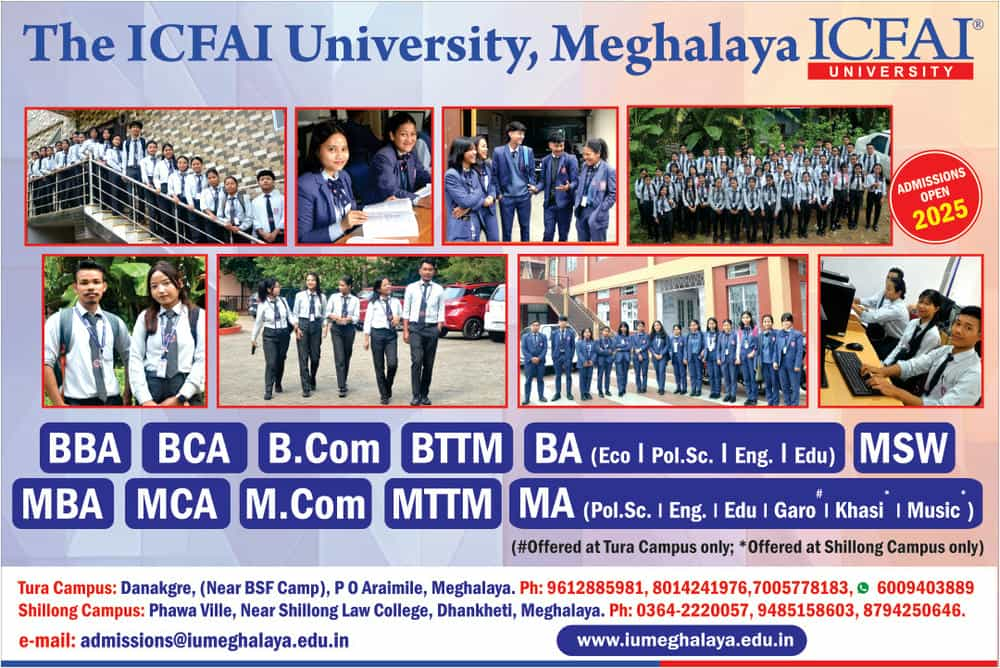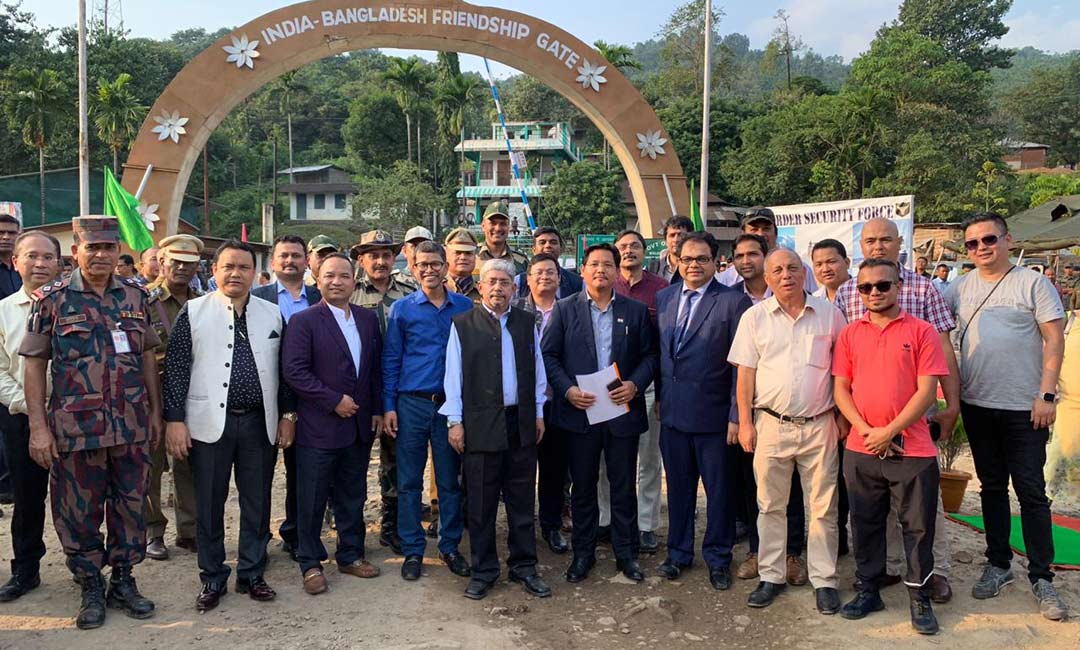Meghalaya CM in Bangladesh on a four day visit

SHILLONG: Chief Minister Conrad K Sangma on Tuesday started his four-day road tour to Bangladesh to build a lasting relationship that spans over multiple sectors with the neighbouring country.
The purpose of the visit is to deepen the relationships across many sectors and to build networks that are mutually beneficial.
The delegation also comprises of cabinet ministers Banteidor Lyngdoh, Sniawbhalang Dhar and Lahkmen Rymbui, senior officials, entrepreneurs and tour operators.
On arriving at Tamabil along the international Indo-Bangla border, the delegation led by the chief minister was received and welcomed by Bangladesh officials including top officers of the Border Guards of Bangladesh.

Yesterday while informing the President Ram Nath Kovind, who was on his maiden visit to the state on Monday, Conrad said that during his four-day journey to Bangladesh, he would be travelling by road covering closed to 700 kilometers.
“In this journey, I will meet farmers, entreprenuers, students, in Bangladesh and try to find out if there is an opportunity where not only Meghalaya but entire North East can do business with Bangladesh and create an environment for those opportunities,” the CM had said.
Stating that Bangladesh and India have a trade of almost 10 million dollars, Conrad however lamented that Meghalaya is contributing only one percent inspite of sharing the longest border with Bangladesh.
Meanwhile, on arriving at Sylhet, the delegation led by the chief minister also attended a meeting organized by the Sylhet Chamber of Commerce and Industry.
Terming the visit as historic, Conrad Sangma said, “I am here to reassure that the state of Meghalaya and India are very serious about our relation and future with Bangladesh. We see a great opportunity and we want to ensure that we create an environment and eco-system where it will be a win-win situation for all of us.”
Meghalaya and Bangladesh share deep cultural, social, and economic relations. Meghalaya shares 443 km of border with Bangladesh. Over the years, there has been a fruitful exchange of goods, ideas and culture. Today, the border trade alone is valued at over 630 crores.

Giving more insight on the visit, Commissioner and Secretary of Chief Minister’s Secretariat said Meghalaya aspires to be a prosperous state by 2030 and Bangladesh is an important partner in our development journey.
To achieve this goal, the state government has put together a clear strategy that capitalizes on our core strengths while developing new capabilities for growth and development, the official said.
The official statement also said that as the gateway to South East Asia, Bangladesh offers us hitherto unexplored avenues of economic exchange ranging from tourism to power.
As a rapidly growing market, Bangladesh has been a destination for our exports including coal, limestone and boulder stone. The Government intends to further improve the border trade through the two-existing border Haats at Kalaichar and Balat and to set up new border Haats, it said.
In terms of tourism, it said Meghalaya offers pristine hill stations, rich culture and music, exciting adventure sports and serene eco-tourism venues. By strengthening cooperation with tour operators of Meghalaya and Bangladesh and developing new historic circuits, Meghalaya Government aims to double the tourist footfalls from Bangladesh in the next two years.
Meghalaya is blessed with the abundance of natural resources and congenial environment for natural and organic farming. To build a resilient future for the farmers of the State, the Government aims to increase exports of niche agricultural and horticultural products to neighboring countries, especially Bangladesh.
Power Sector is another opportunity. Currently, Meghalaya has been able to tap only 10% of the 3400 MW hydropower potential. The plan is to significantly increase this capacity by 2022 with the advent of six new medium and large hydro-power projects. Bangladesh is an important potential market for power from Meghalaya.
Lastly, the excellent educational institutions of Shillong can be a transformative opportunity for a young country like Bangladesh which has nearly 30% of their population in the 10-24 age group.

Leave a Reply